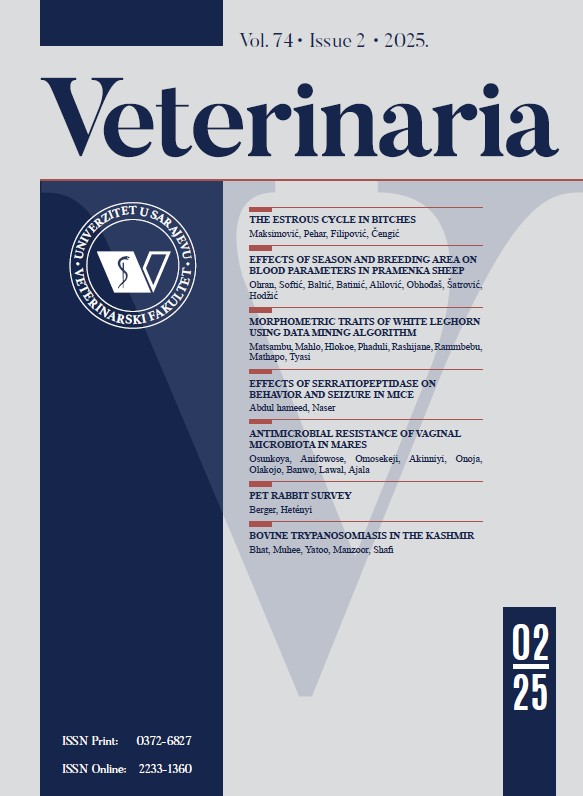Prevalence and associated risk factors of bovine mastitis in Ashulia, Dhaka, Bangladesh
DOI:
https://doi.org/10.51607/22331360.2022.71.2.191Keywords:
Dairy farm, mastitis, milk, udder infectionAbstract
Mastitis is a devastating and critical infectious disease globally including in Bangladesh. Antibiotic treatment can cure the disease, but the cows will be unable to reverse their previous productive condition. Therefore, the identification of the possible risk factors and management of those factors is the only way to minimize the losses in the dairy sector. The present study was conducted to clarify the existing status of the disease and to find out the possible risk factors of the disease to adjust successful control measures. The result exhibited that, 57% of cows in the study area were infected by mastitis. Of these, subclinical mastitis was more predominant (85%) than clinical mastitis (15%). Most of the cows got an infection at 3.5 to 5 years of age in the 3rd to 4th lactation and during the early lactational stage (3 months). Principal component analysis and Pearson correlation matrix analysis revealed that high milk producers, intensive rearing system, improper hygiene during milking, new farms by unskilled farmers, and poor physical condition of the cows showed positive association to mastitis. However, an adaptation of an extensive or semi-intensive rearing system, as well as washing hands and udders before and after milking using antiseptic together with proper training of the farmers on scientific dairy farming, can reduce the prevalence of mastitis in the study area. This will be advantageous in decreasing antibiotic usage and lessening new antibiotic-resistant bacterial strains.
Downloads
Published
How to Cite
Issue
Section
License
Copyright (c) 2022 Kazi Md. Al-Noman, Md. Ruknuzzaman, Mst. Nasrin Banu, Himangsu Sarkar, Md. Abdur Rahman, Ashleigh Pencil, Md. Ashraful Alam, Md Shafiullah Parvej

This work is licensed under a Creative Commons Attribution 4.0 International License.








